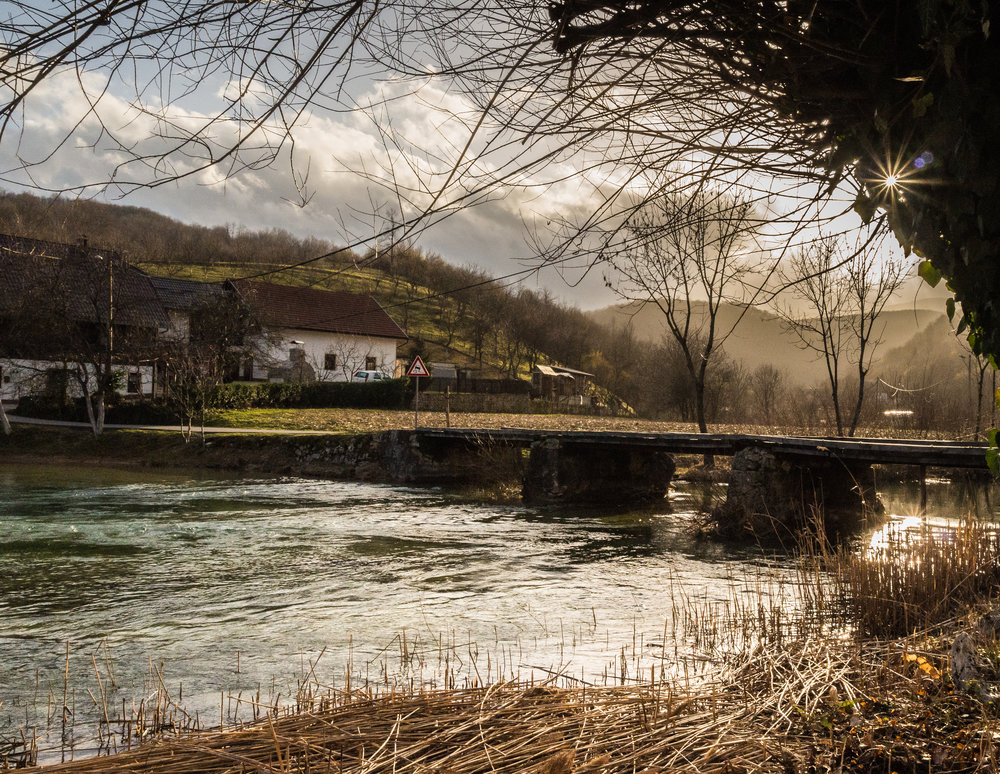
At the north end of the Plitvice Lakes National Park in Croatia the Korana river flows through a rocky gorge and then, as the valley widens into pastureland, through the hamlet of Korana. Within the hamlet over one of the river’s small waterfalls sits the rustic Korana water mill which has been milling corn for decades.
This is the second of Kevin Armstrong’s articles on the Plitvice Lakes National Park. Find his story of “Plitvice Lace” by clicking here.
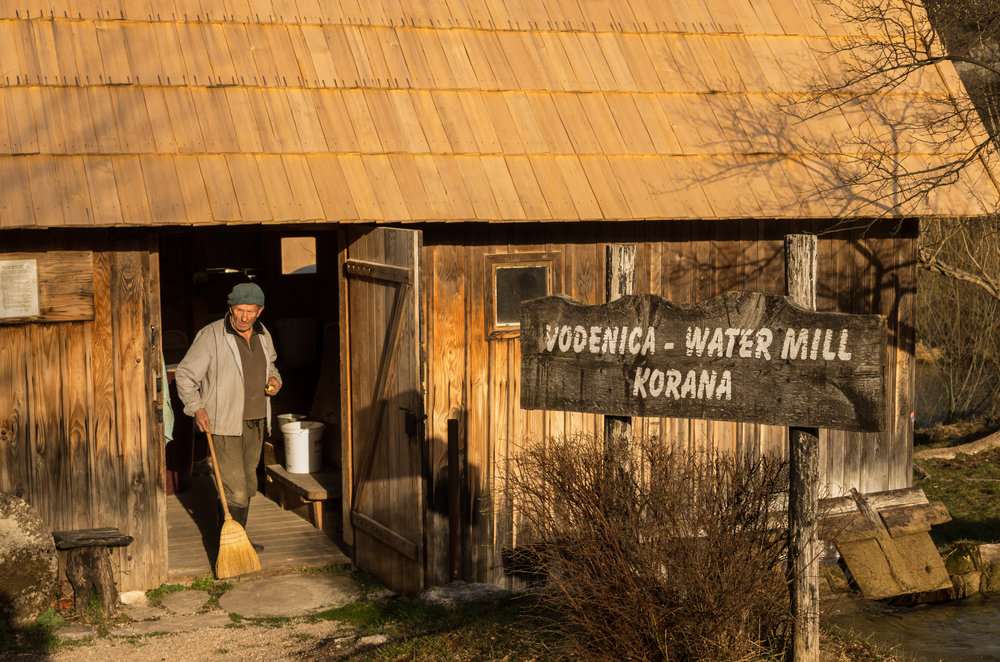
I visited the Korana Water Mill in February 2016 with the late afternoon sun shining down the valley and was welcomed by the miller who was happy for me to wander around and photograph him at work. I speak little Croat but the combination of me waving the X Vario and him smiling and nodding seemed to settle things. The national park administration publishes a small guide to the mill and the milling process but only a version in Croat was available in the mill.
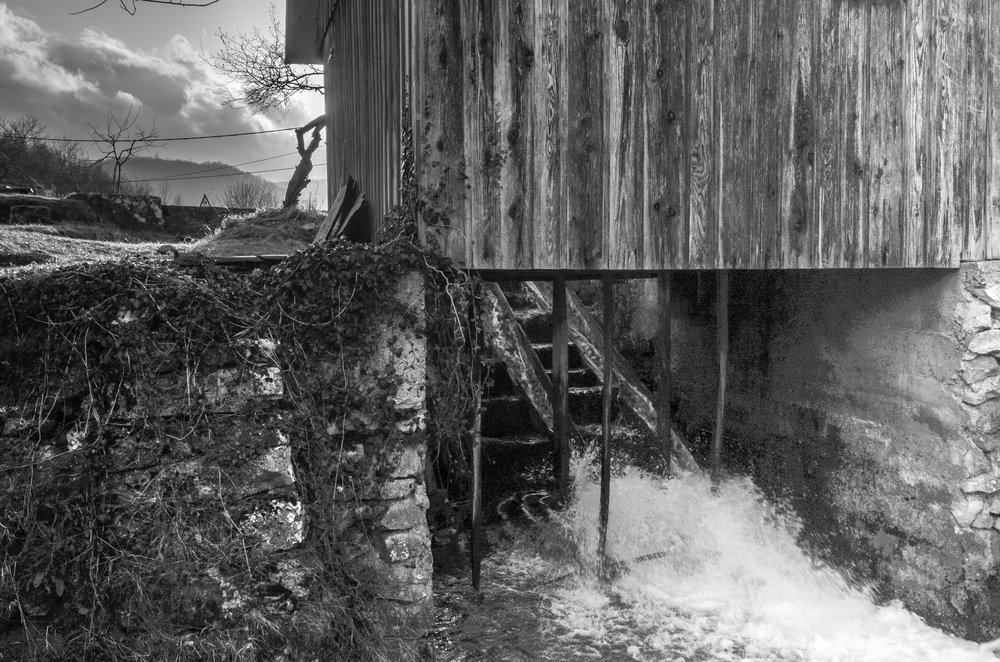
The wooden mill building comprises two rooms, one over the river housing the milling equipment and the other, over the bank beside the river, providing basic accommodation for the miller. Part of the river is diverted down wooden chutes to drive two sets of horizontal turbine blades and vertical wooden shafts to turn the two milling stones above. I saw there were three chutes and turbine shafts beneath the mill but only two milling stones seemed to be in working order.
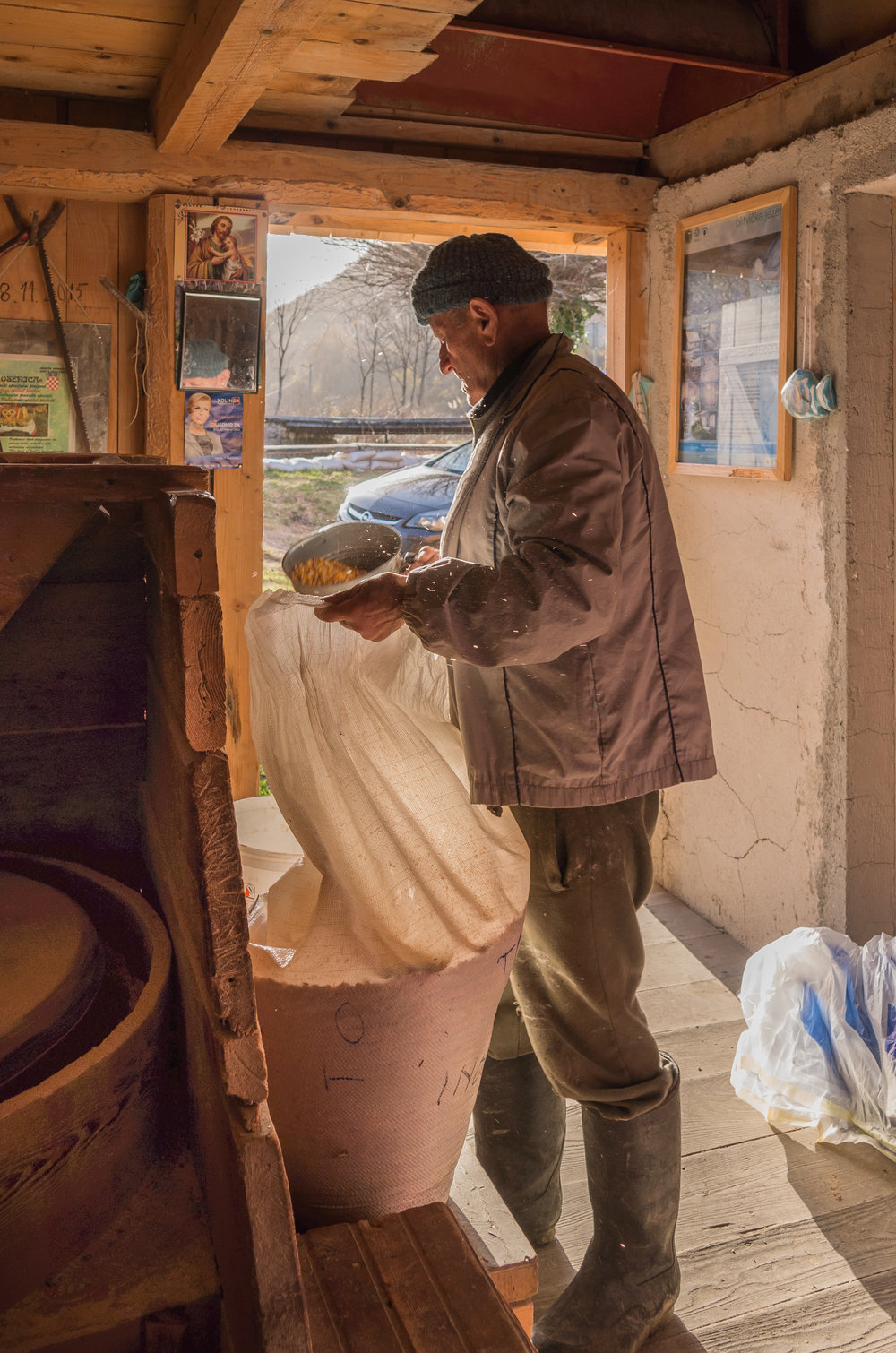
I was intrigued by the place and the way at that time of year and day the low sun streamed through the doorway and windows beautifully illuminating the miller, the apparatus and the corn in its hoppers awaiting milling. I took my time observing at the miller at work scooping the yellow corn out of fabric bags and loading it into the hoppers.
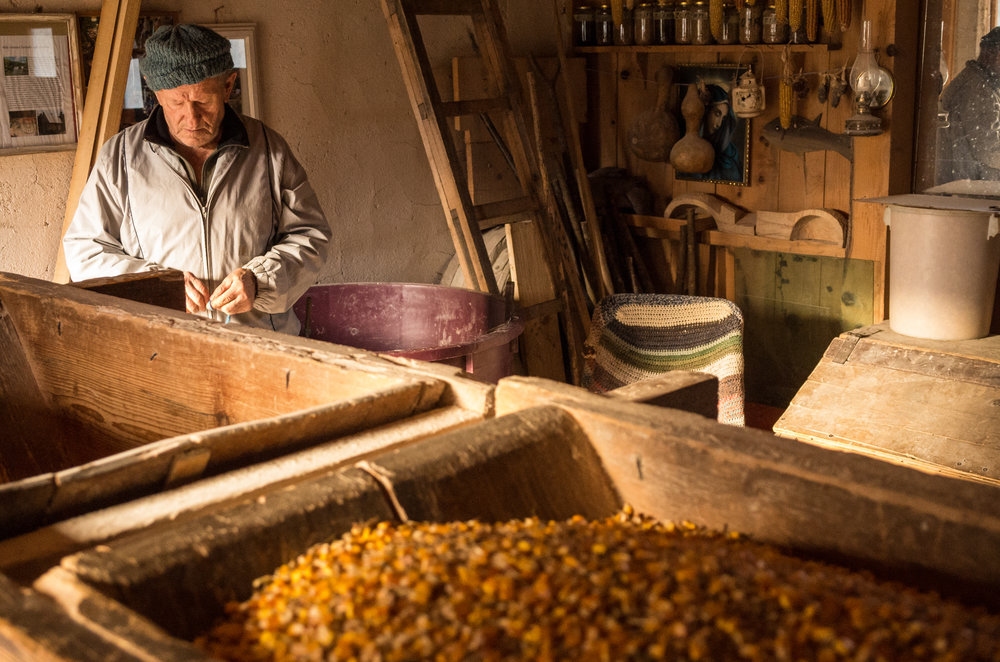
One hopper was full and the miller was loading the second. As there appeared to be little in the way of electric light in the mill I surmised that the miller’s habit was to load the hoppers in the afternoon and then mill the corn in the morning.
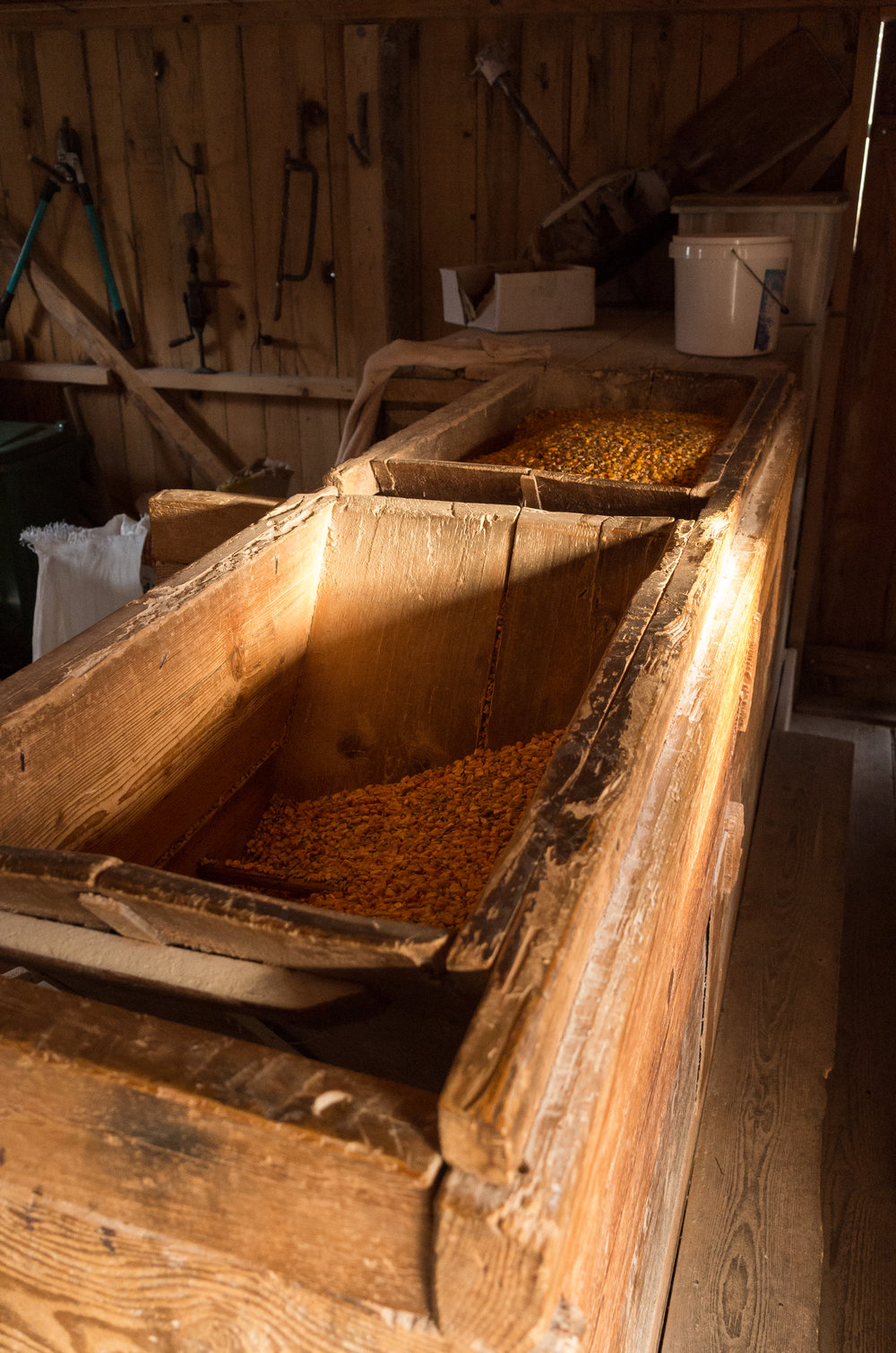
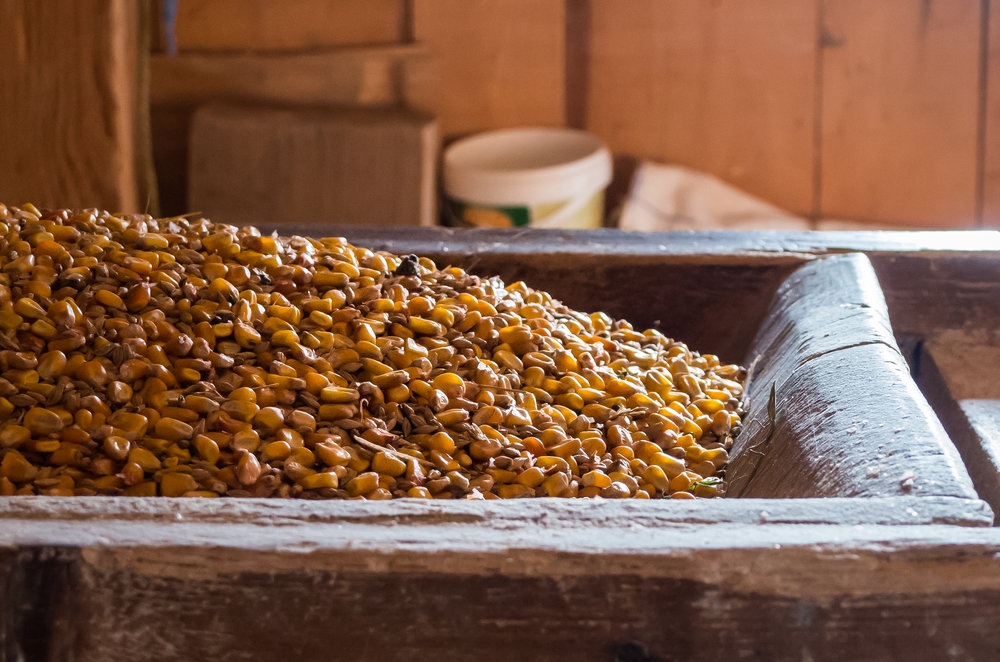
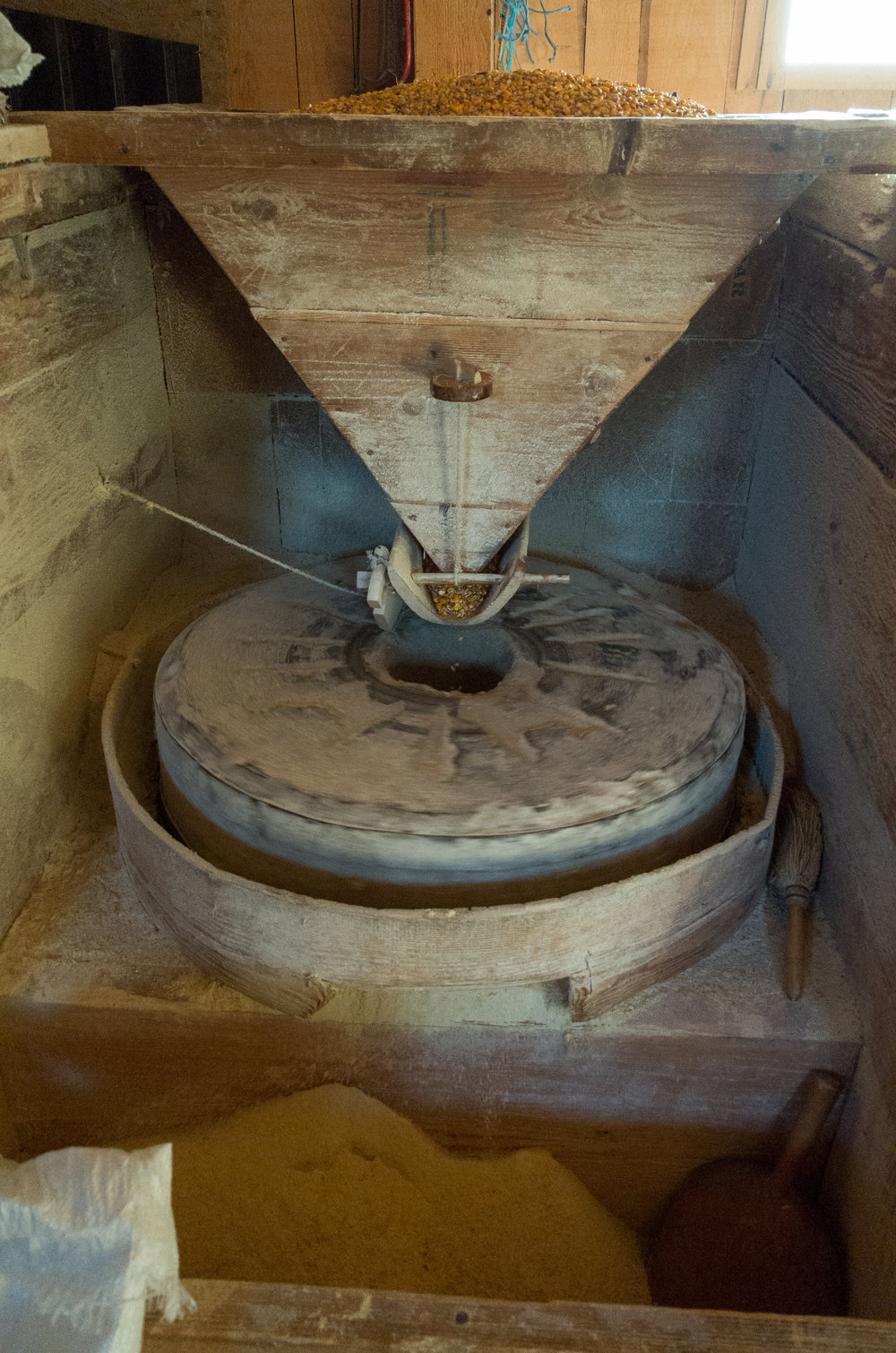
Keen to explore and photograph the water passing beneath the mill I took a look down the chutes to the turbines below and then ventured behind the mill and down the bank to get a closer look at the outflow.
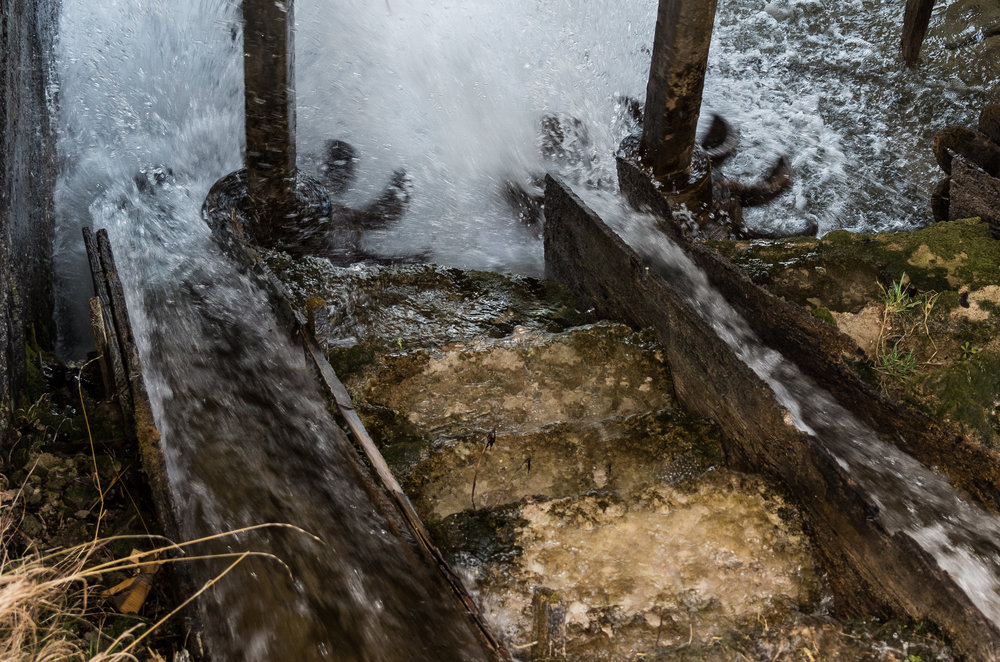
At the rear of the mill I photographed the water passing the turbines and returning to the river using various shutter speeds. I found that smoothing the flow by slowing the shutter speed to 1/8 the water’s velocity was emphasised. However when photographing the overall scene I found the smoothing effect at 1/8 reduced the sense of the power and violence as the water flowed down, onto and away from the spinning turbines and for me they were better expressed at 1/125.
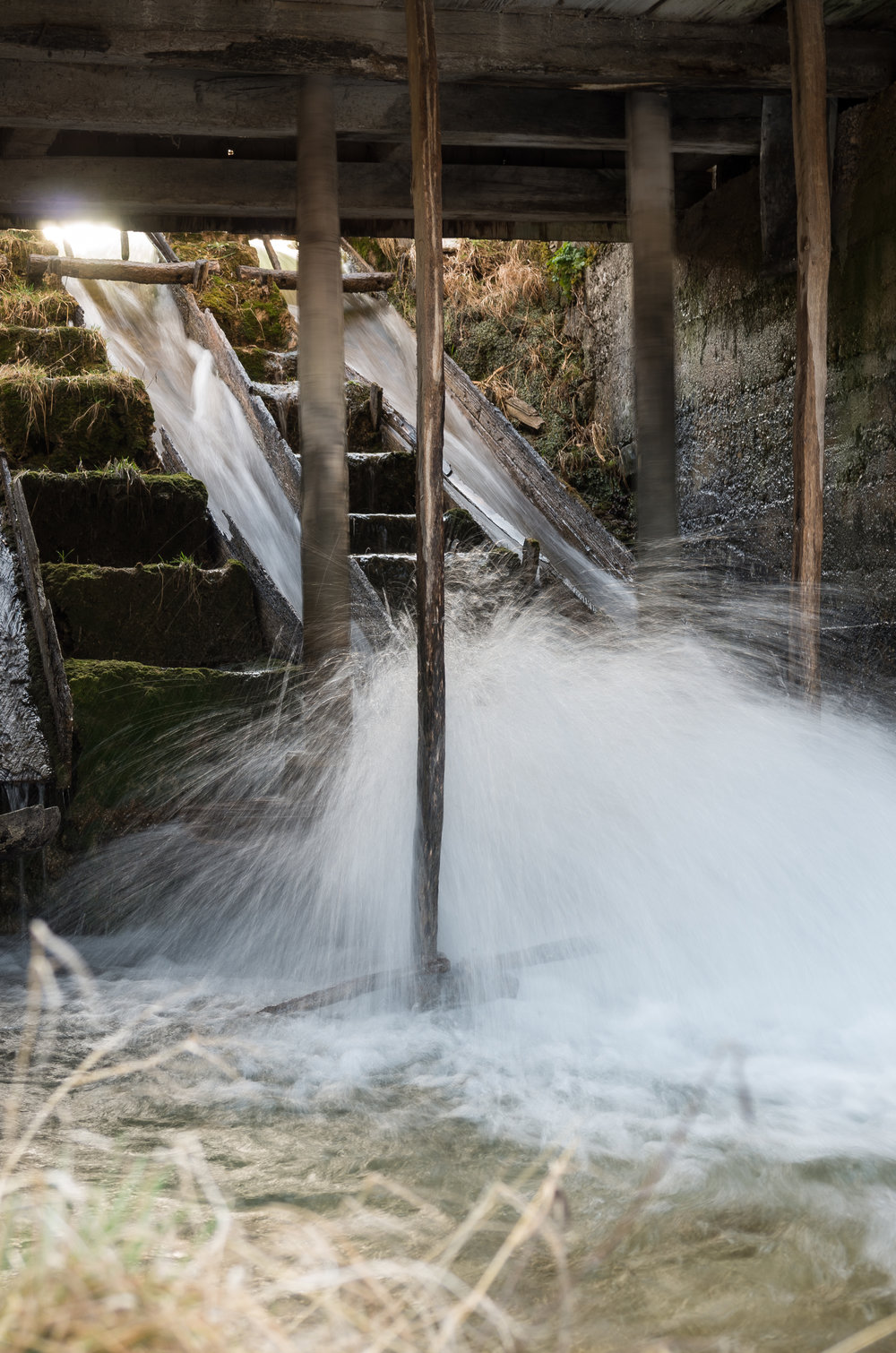
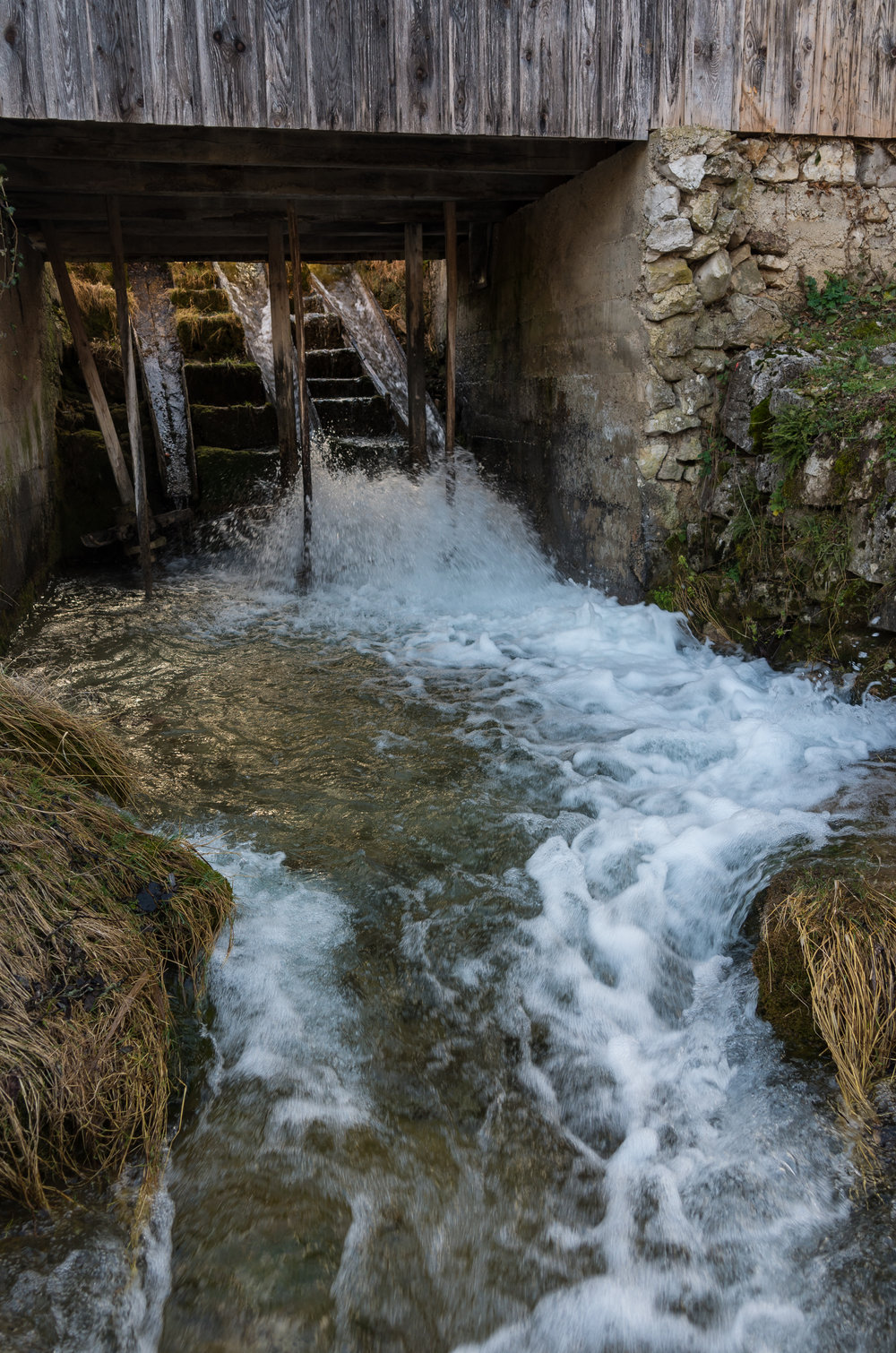
- Subscribe to Macfilos for free updates on articles as they are published
- Want to make a comment on this article but having problems?

Great, unusual light and good technique here. Looking at the title photo with the nice sunstar and those of the miller indoors, there is a nice ‘separation of layers’ created, without the option of narrow DOF. The X Vario doesn’t have the fastest lens and you use it very well here in tricky light.
Fantastic lighting, Kevin. Particularly the internal shots, the golden hues suit the subject perfectly.
Interesting, Kevin. Trying to work out what the two gremlins are doing near the sluice structure in third picture from last.
Kevin, nice light, interesting photos and story but I’m not sure how the single black and white snuck in.
It’s always good to see some more X Vario photos. Maybe we should form an X Vario enthusiast’s group. We could hold our meetings in a phone box.
A phone box? What about Churchill’s War Rooms, down in the bunker…..
Mike , we’d be lost in such a large space.There are not many of us….
Thanks for your comments Gents!
You certainly made the most of the excellent low sun lighting – and an interesting story. Thank you.
Philip
Some nice ‘slaps’ there, Kevin. Lovely light, very well caught.
William
Beautiful photos and story line. Wonderful, thank you.